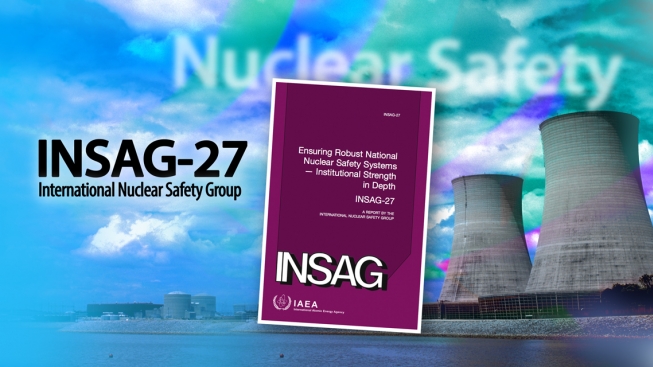Rigorous application of the IAEA’s safety standards forms the
basis for high levels of safety in nuclear installations. Strong and
effective institutions that ensure that these standards are applied are
key to further enhancing safety, according to a
new report by the International Nuclear Safety Group (INSAG). The report is entitled
Ensuring Robust National Nuclear Safety Systems — Institutional Strength in Depth.
“The nuclear community has already been studying and discussing the
different interactions that exist between individuals and organizations
that are important to strengthen nuclear safety and this is one of the
key lessons from the
accident at the Fukushima Daiichi nuclear power plant,”
said Lyndon Bevington, IAEA Scientific Secretary of INSAG. “This report
builds on these discussions and considers how institutional structures
can interact to further enhance nuclear safety.”
According to the report, a national nuclear safety system is
characterized by interactions between and within the nuclear industry,
the regulatory body and other relevant stakeholders. These groups
include nuclear designers, vendors, constructors, suppliers, operators,
regulators, technical support organizations, governments, local
communities, the media and civil society — in essence, any party with an
interest in a nuclear programme.
From engineers to institutions
In the nuclear industry, building different layers or levels of
safety in nuclear installations to protect people and the environment in
case of an accident is a longstanding and well accepted concept. It is
commonly known as ‘defence in depth’. INSAG-27 draws on the broad
elements of this concept, transferring them from the world of
engineering to the operation of entire institutions. The institutional
strength-in-depth concept recognizes the important influence that the
different layers that exist within and between organizations can have on
enhancing safety, Bevington said.
“We are hopeful that the analysis of ‘institutional strength in
depth’ will join ‘defence in depth’ as a fundamental tool in the
never-ending quest to enhance nuclear safety,” said Richard Meserve,
Chairman of INSAG. “A systemic approach to safety is most effective when
it considers the interactions between human, organizational and
technical factors.”
While this publication is mainly written for those involved in
nuclear power programmes, the concept it describes can be applied to all
nuclear facilities, Meserve said.
One of the report’s recommendations addressed the value of this
approach for countries embarking on new nuclear power programmes, where
the organizational infrastructures may be less well developed. Here, the
concept of institutional strength in depth can bring safety benefits
when established at an early stage of a new nuclear programme.
INSAG is a group of nuclear safety experts drawn from regulatory
bodies, technical support organizations, research and academia and the
nuclear industry. The group is convened under the auspices of the IAEA
to provide advice and guidance on nuclear safety approaches, policies
and principles. The new report,
INSAG-27, is the 27th in a series available
here.


















